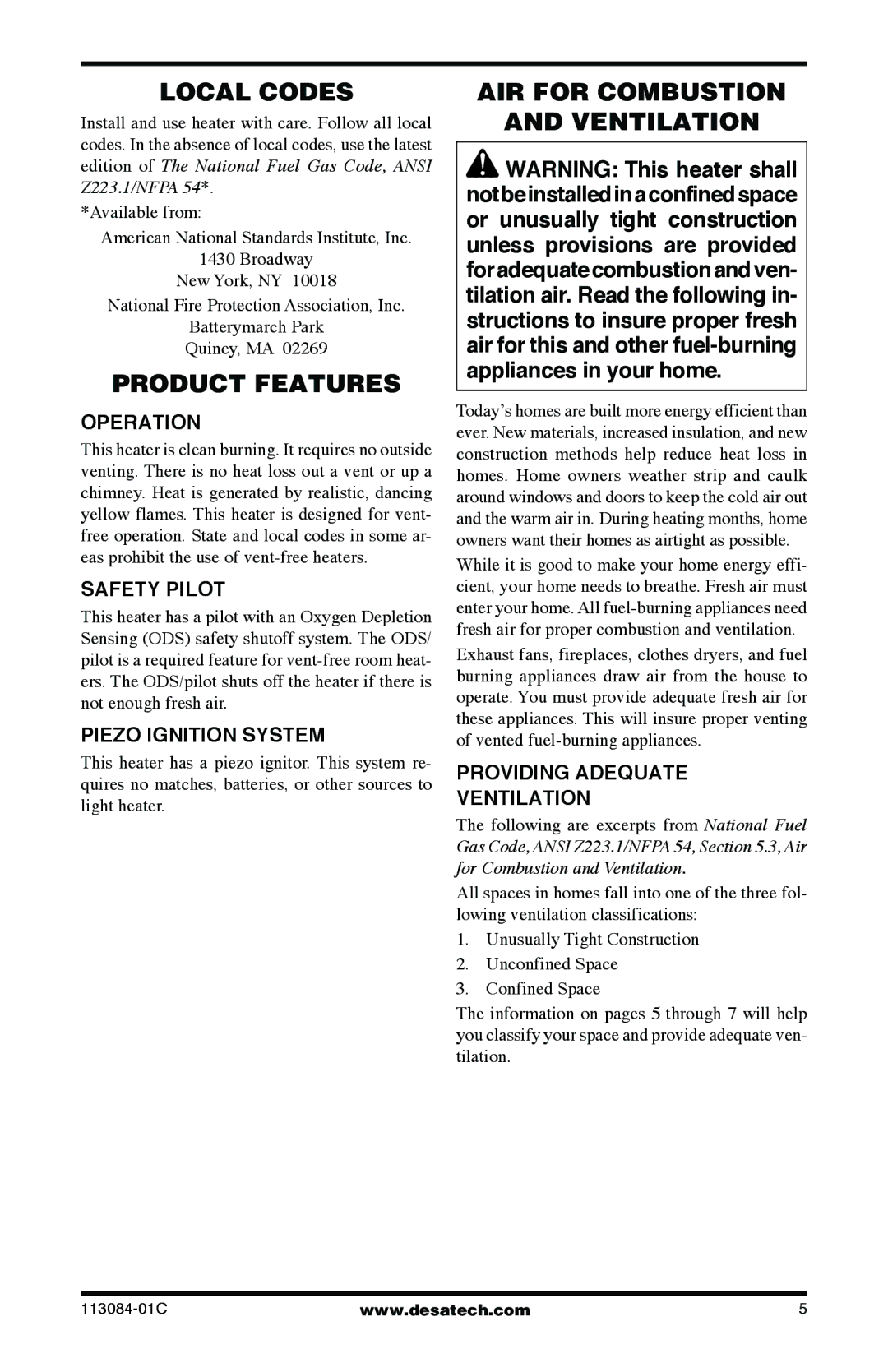
LOCAL CODES
Install and use heater with care. Follow all local codes. In the absence of local codes, use the latest edition of The National Fuel Gas Code, ANSI Z223.1/NFPA 54*.
*Available from:
American National Standards Institute, Inc.
1430 Broadway
New York, NY 10018
National Fire Protection Association, Inc.
Batterymarch Park
Quincy, MA 02269
PRODUCT FEATURES
OPERATION
This heater is clean burning. It requires no outside venting. There is no heat loss out a vent or up a chimney. Heat is generated by realistic, dancing yellow flames. This heater is designed for vent- free operation. State and local codes in some ar- eas prohibit the use of
SAFETY PILOT
This heater has a pilot with an Oxygen Depletion Sensing (ODS) safety shutoff system. The ODS/ pilot is a required feature for
PIEZO IGNITION SYSTEM
This heater has a piezo ignitor. This system re- quires no matches, batteries, or other sources to light heater.
AIR FOR COMBUSTION
AND VENTILATION
![]() WARNING: This heater shall notbeinstalledinaconfinedspace or unusually tight construction unless provisions are provided foradequatecombustionandven- tilation air. Read the following in- structions to insure proper fresh air for this and other
WARNING: This heater shall notbeinstalledinaconfinedspace or unusually tight construction unless provisions are provided foradequatecombustionandven- tilation air. Read the following in- structions to insure proper fresh air for this and other
Today’s homes are built more energy efficient than ever. New materials, increased insulation, and new construction methods help reduce heat loss in homes. Home owners weather strip and caulk around windows and doors to keep the cold air out and the warm air in. During heating months, home owners want their homes as airtight as possible.
While it is good to make your home energy effi- cient, your home needs to breathe. Fresh air must enter your home. All
Exhaust fans, fireplaces, clothes dryers, and fuel burning appliances draw air from the house to operate. You must provide adequate fresh air for these appliances. This will insure proper venting of vented
PROVIDING ADEQUATE
VENTILATION
The following are excerpts from National Fuel Gas Code, ANSI Z223.1/NFPA 54, Section 5.3, Air for Combustion and Ventilation.
All spaces in homes fall into one of the three fol- lowing ventilation classifications:
1.Unusually Tight Construction
2.Unconfined Space
3.Confined Space
The information on pages 5 through 7 will help you classify your space and provide adequate ven- tilation.
www.desatech.com | 5 |
